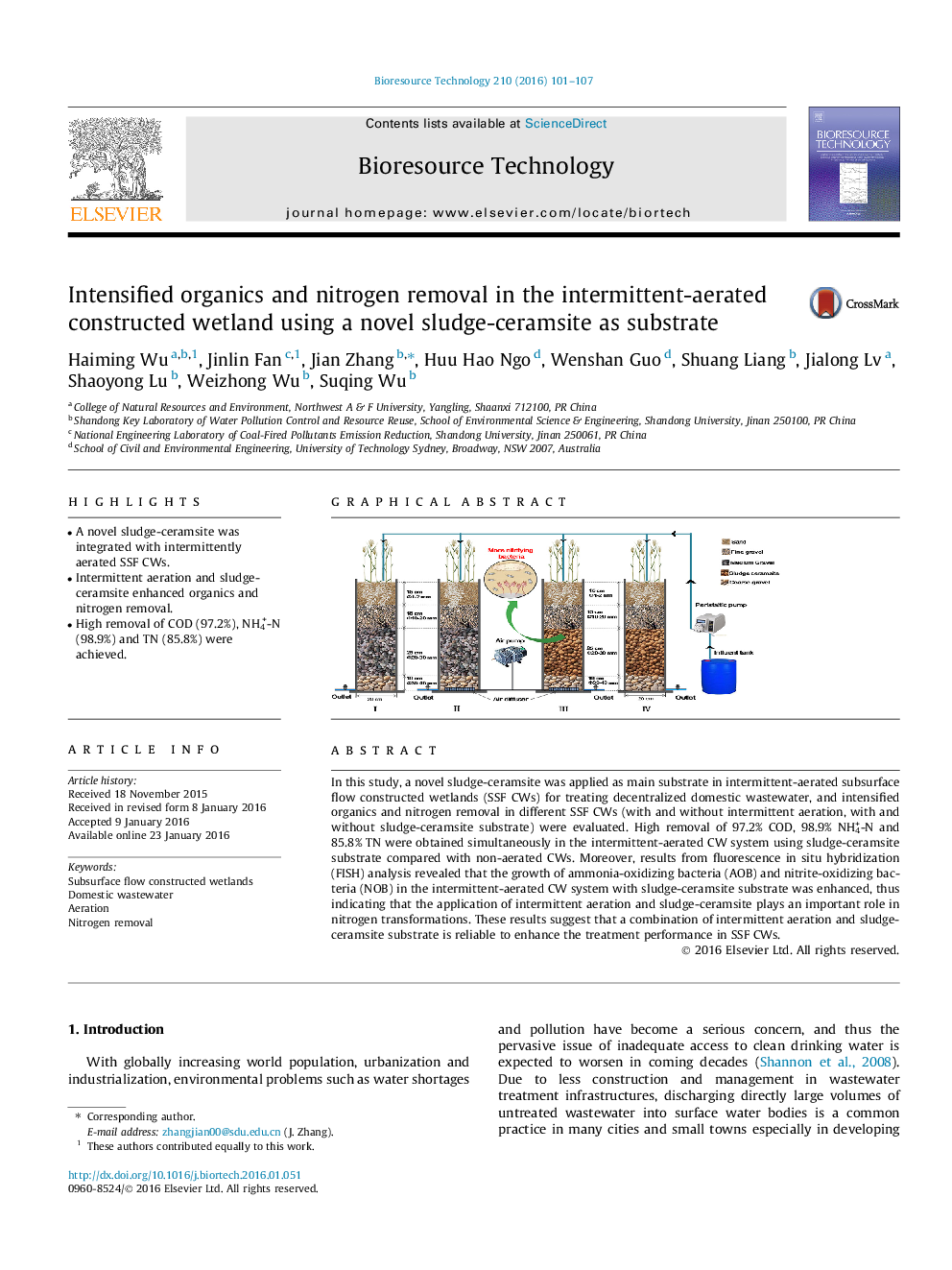| Article ID | Journal | Published Year | Pages | File Type |
|---|---|---|---|---|
| 679020 | Bioresource Technology | 2016 | 7 Pages |
•A novel sludge-ceramsite was integrated with intermittently aerated SSF CWs.•Intermittent aeration and sludge-ceramsite enhanced organics and nitrogen removal.•High removal of COD (97.2%), NH4+-N (98.9%) and TN (85.8%) were achieved.
In this study, a novel sludge-ceramsite was applied as main substrate in intermittent-aerated subsurface flow constructed wetlands (SSF CWs) for treating decentralized domestic wastewater, and intensified organics and nitrogen removal in different SSF CWs (with and without intermittent aeration, with and without sludge-ceramsite substrate) were evaluated. High removal of 97.2% COD, 98.9% NH4+-N and 85.8% TN were obtained simultaneously in the intermittent-aerated CW system using sludge-ceramsite substrate compared with non-aerated CWs. Moreover, results from fluorescence in situ hybridization (FISH) analysis revealed that the growth of ammonia-oxidizing bacteria (AOB) and nitrite-oxidizing bacteria (NOB) in the intermittent-aerated CW system with sludge-ceramsite substrate was enhanced, thus indicating that the application of intermittent aeration and sludge-ceramsite plays an important role in nitrogen transformations. These results suggest that a combination of intermittent aeration and sludge-ceramsite substrate is reliable to enhance the treatment performance in SSF CWs.
Graphical abstractFigure optionsDownload full-size imageDownload as PowerPoint slide
